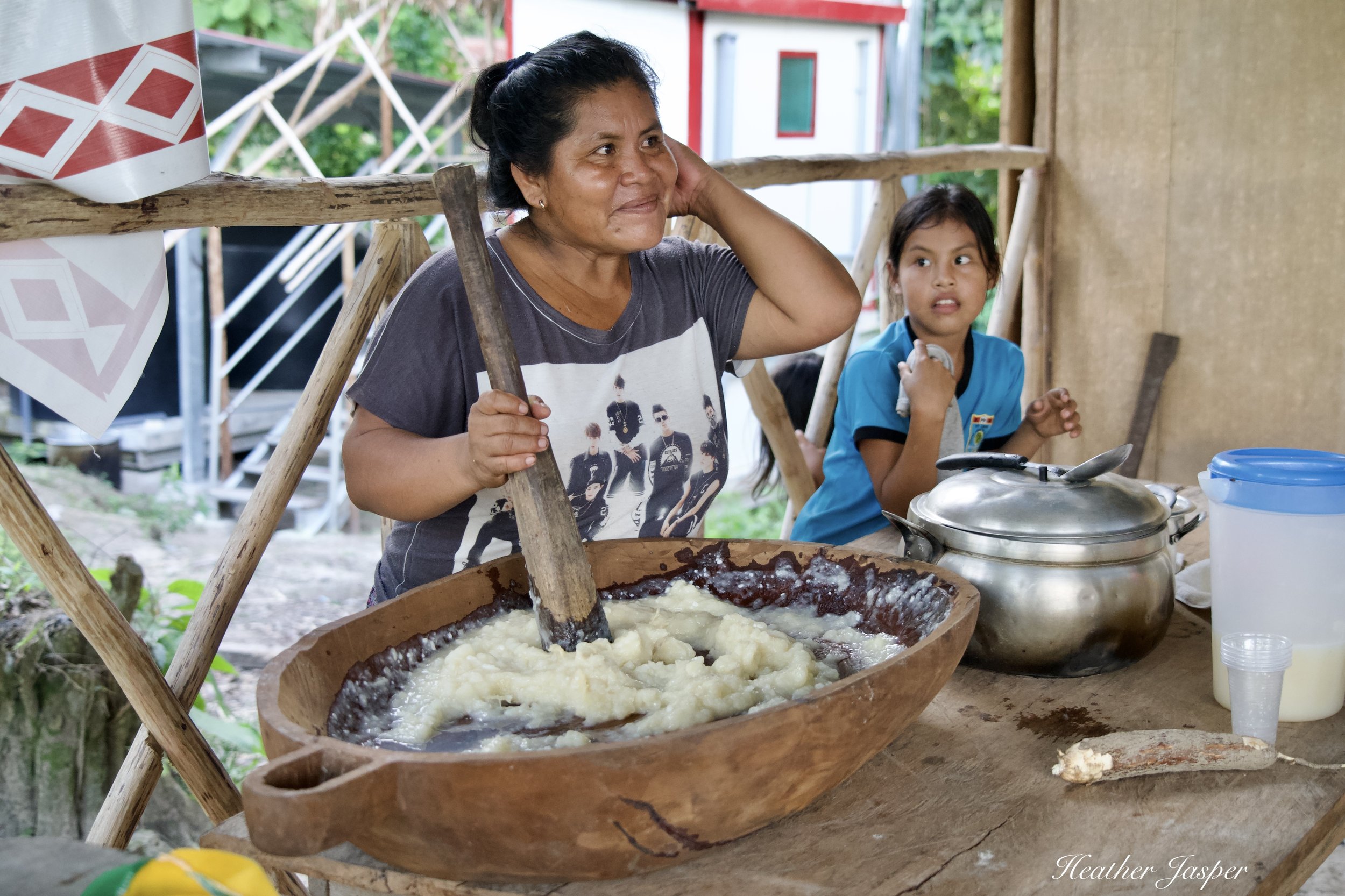Travel Tip 52
How to avoid exploitative tourism
Learning about the art of natural dyes to dye palm fiber for weaving everything from hammocks and sleeping mats to baskets and jewelry in the Peruvian Amazon.
My top three tips to avoid exploitative tourism
So, this is a giant can of worms, but I’m defining exploitation very narrowly here to be economic and cultural exploitation in terms of tourism. Maybe someday I’ll have time to write a full treatise on exploitation in tourism, but in this newsletter, I’m going for concise.
1. Who owns the company?
One of the most common forms of exploitation takes the profits away from local communities. Using a community for tourism but taking away all the profits is a modern continuation of colonialism. Look for locally owned companies that employ locals and keep company profits in the community, while also holding those companies to the same ethical standards that you would use to evaluate an international company.
One family taught about making masato, both how to make it from cassava and how important it is in Amazonian culture. Then we all got to taste some finished masato from the blue topped pitcher on the right. (Note that K-pop has made it to the rainforest!)
2. Are you interacting with locals or observing them as if they were a zoo or museum exhibit?
One thing to look for is if experiences with locals are framed as learning from them, or if it’s about seeing them. It’s a subtle difference that you can’t always tell ahead of time. Last December I visited an Amazonian village with Delfín, though I wanted to skip the activity when I saw it listed as “village visit.” It sounded like a zoo experience but turned out to be an engaging tour of several homes throughout the village. At each home, the family taught us something specific about their art, cuisine and culture. It was much more respectfully done than what I expected from the description of “village visit.” Look for workshops led by locals and farm-to-table restaurants that serve locally grown food that’s important in their culture.
Erlinda showed me how she washes wool with the root on the ground in front of her and then how she spins yarn at her home in Chinchero. I went to buy a blanket but will go back to learn more about weaving from her.
3. Are there cultural experiences that are led by locals?
This isn’t always easy to figure out ahead of time, so ask questions before you sign up for a tour if you don’t know where the guide is from. Is the guide, or even better, group of guides, from the community that you’re visiting? This can be tricky when there are language barriers, but if you have a guide from somewhere else, make sure that they’re translating for locals, not talking over them. What you want to find is a community that welcomes tourists and shares the parts of their culture that they want to share. Try to avoid tours where a tour company from somewhere else imposes on the community.
That’s my effort at concise! I’ll be revisiting this idea more in future newsletters, because there’s a lot to dig into here.
The third day of the Inca Trail is downhill through the slippery cloud forest. It’s treacherous for Inca Trail porters who are overloaded past the legal 25kilo limit.
Article
Problems Afoot on the Inca Trail
I’ve been wanting to write this article for years because of how porters are exploited. I interviewed eleven people on the record for this article, but also included information I learned when working for an Inca Trail tour operator in 2019 and my own experiences hiking the Inca Trail in 2017 and 2019. It’s such a touchy subject in Cusco that I know this article will piss some people off. I’ve already received some pushback from tour companies, which is why I gave my sources pseudonyms in the article. Wonder how porters are exploited? You’ll have to read the article!
Blog
Hike to Choquequirao, Machu Picchu’s Sister Site
Peru has many amazing treks and beautiful Inca cities to visit, like Choquequirao. Machu Picchu’s popularity is part of the problem with the Inca Trail. Peru’s tourism board leans heavily on Machu Picchu and the lucrative train companies spend big on advertising. Sites like Choquequirao have no marketing budget and even the trail to get there is maintained by the local communities that live along it. That means you’ll get a massive Inca city mostly to yourself – if you’re brave enough to do the hike to get there. (If not, you can also ride a horse on most of the trail).
Mules carry gear and tourists to Choquequirao, though you don’t need them. Enough local families cook meals for travelers and rent cabins that you don’t need to carry more than a change of clothes. Don’t bring tents, sleeping bags or even food.







